-
Notifications
You must be signed in to change notification settings - Fork 1
Tests
Theoretical prediction for Coronene molecule modified with with four nitrogen atoms (here called as 4n-coronene). The files containing information about its geometry, how it was calculated and how the LCAO coefficients were taken are in the folder tests/4N-coronene. Her you can see the geometry of the molecule:



Example of scans over this molecule, with different probing orbitals and different scanning modes (AFM, STM, dI/dV ... ).

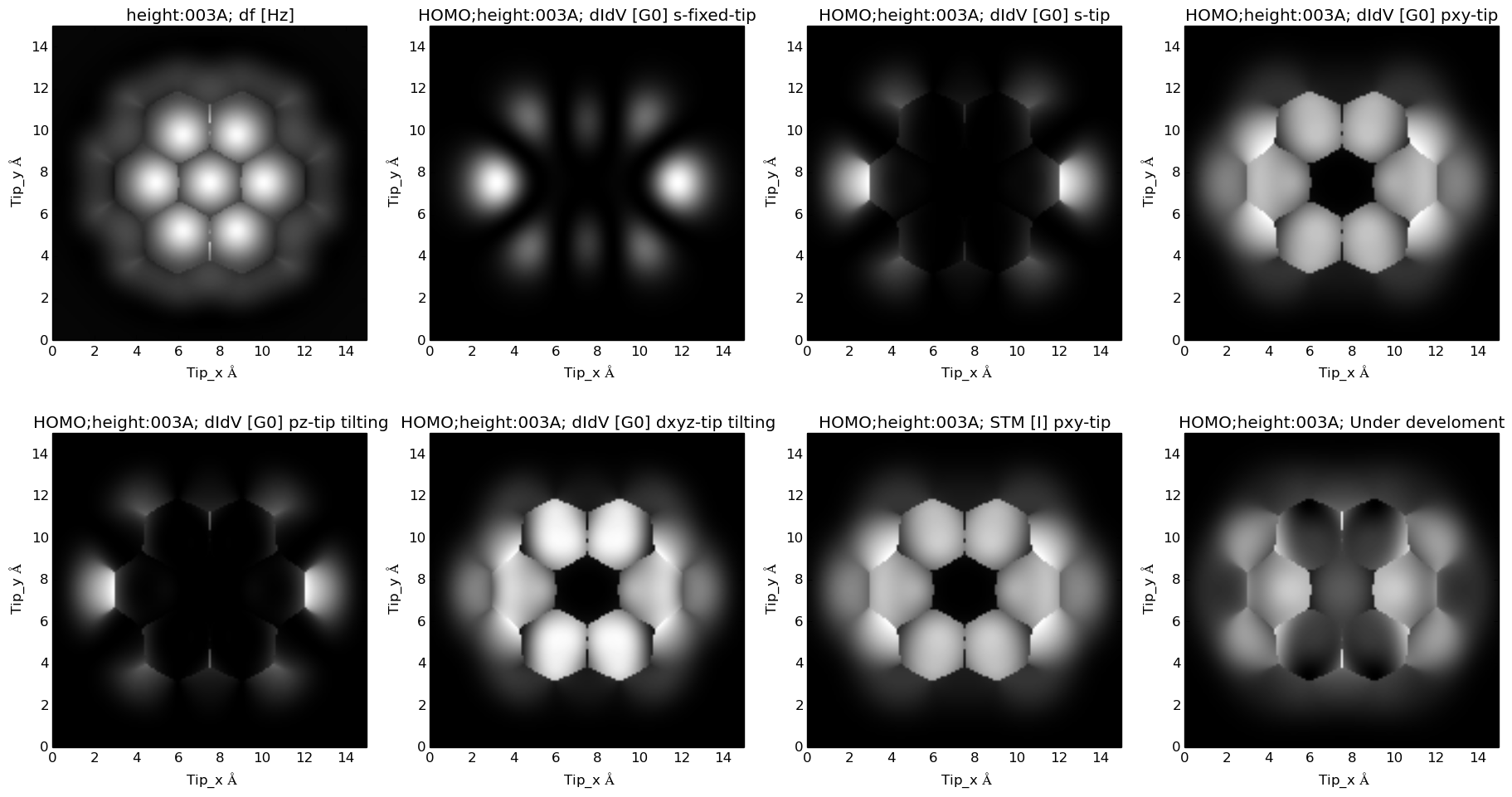
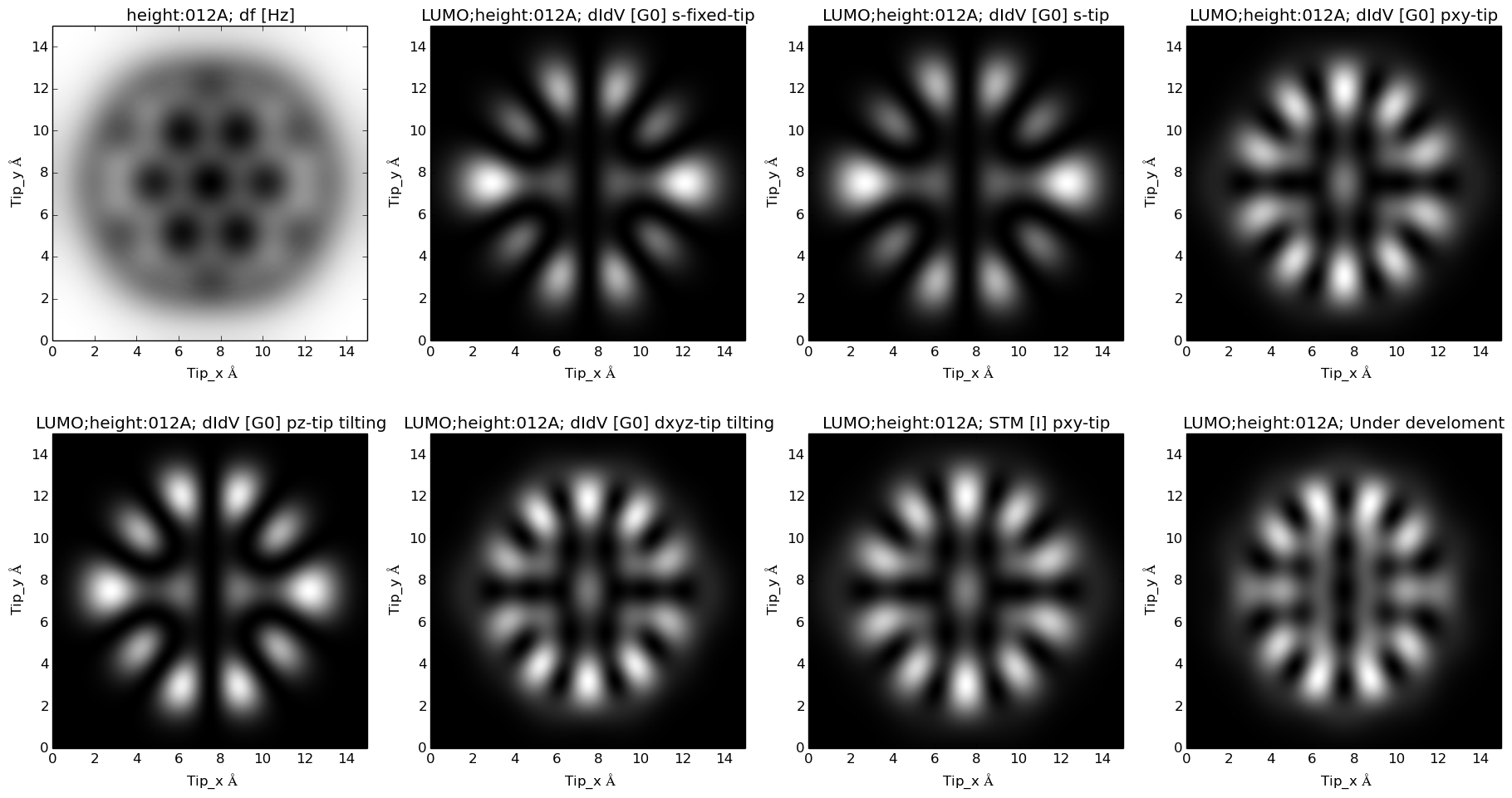
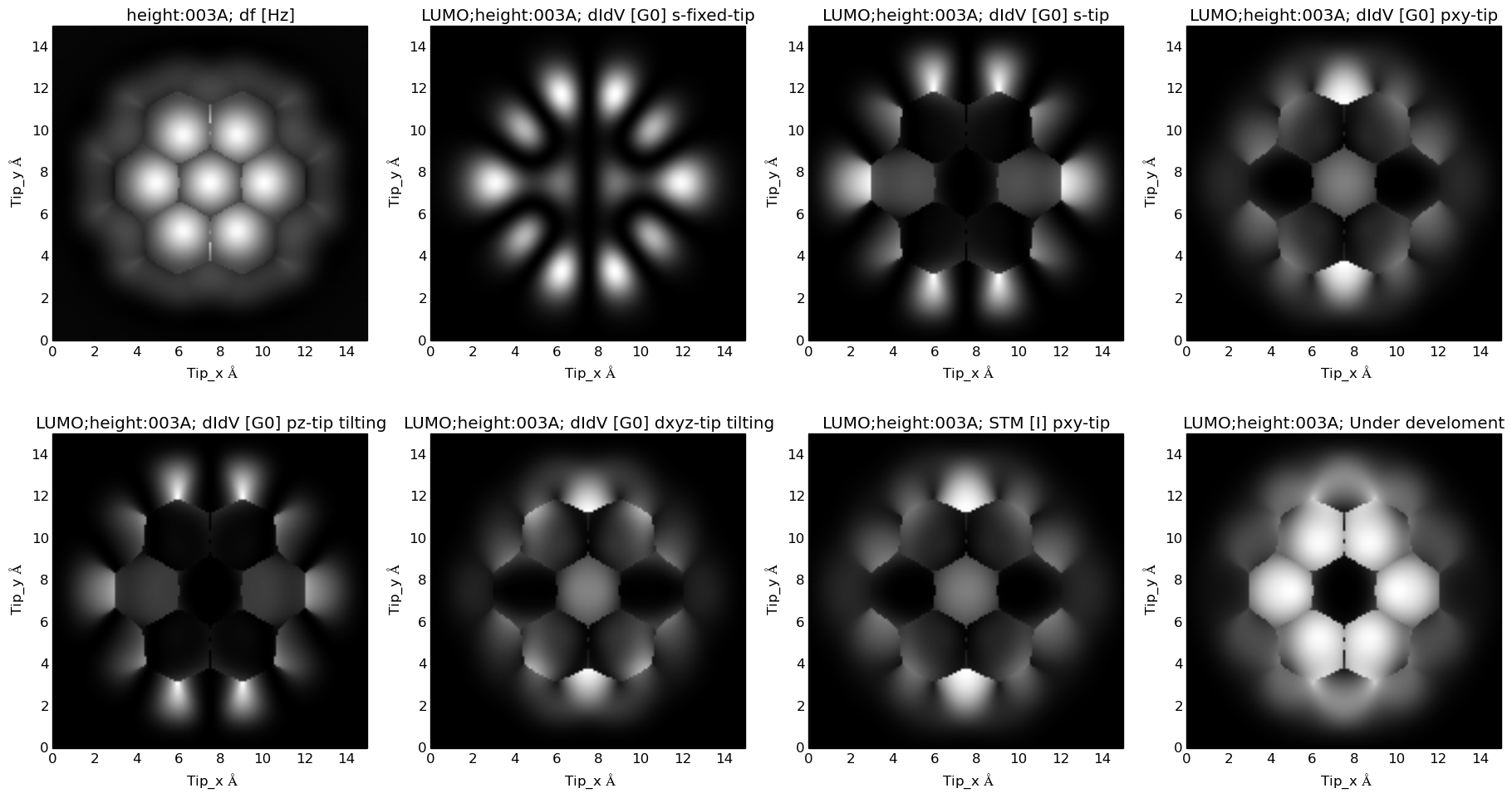
Calculated with FireballTG,McWEDA-LDA functional. The slab has 6 Si layers + 1 hydrogen passivating layer. Only Γ k-point was used
Simulations were proceed s,p and d valence electrons on the sample and s orbital on the last atom of the rigid tip apex. All the showed images are constant height scans taken 5Â above the highest adatom of the sample. Three types of simulations were performed - dI/dV simulation, standard STM (when the tunnelling barrier is changing in one to one correspondence with the applied sample bias) and flat STM (when the barrier was not changing with the applied bias).
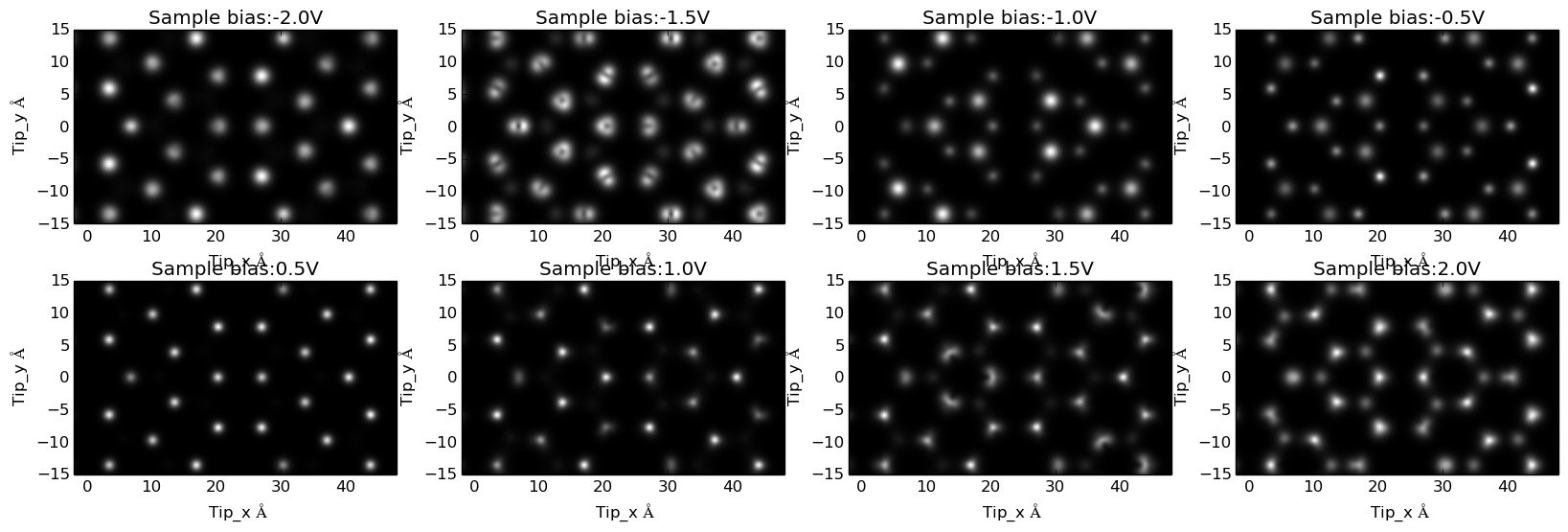
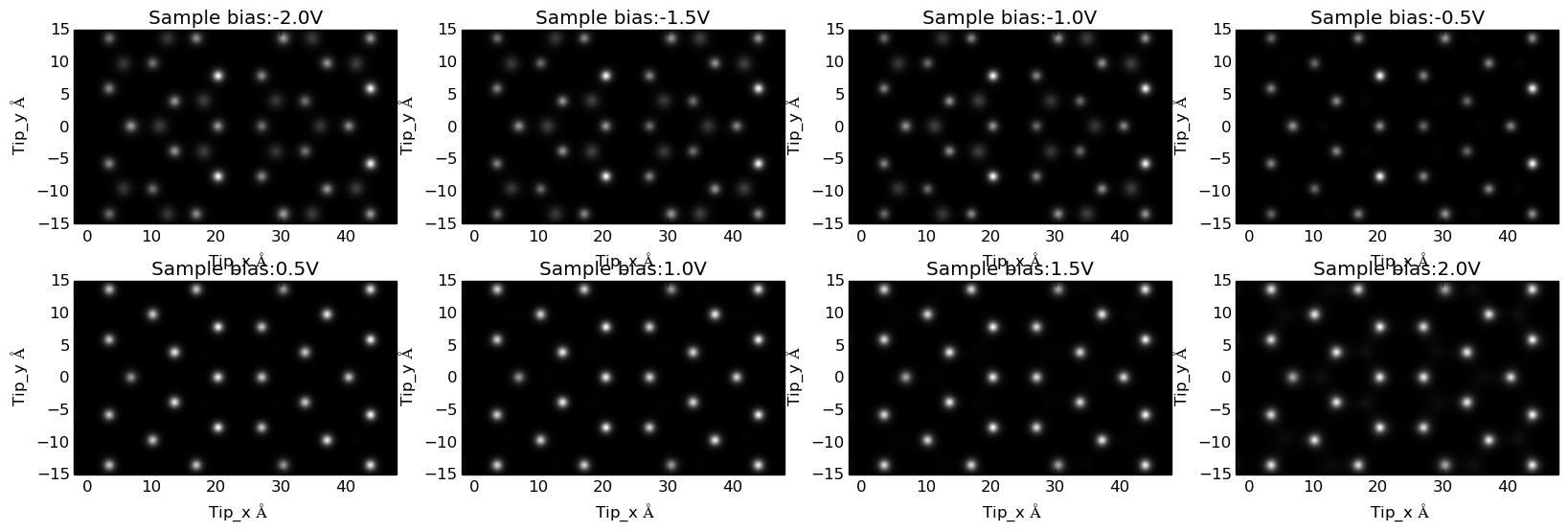

Calculated with FHI-AIMS, PBE+U functional. Cu 3d orbitals had: U = 7eV. control.in and geometry.in files for the FHI-AIMS run are in the directory.
Simulations were proceed s,p and d valence electrons on the sample and s orbital on the last atom of the rigid tip apex. The showed image is a dI/dV scan constant height scans taken 1Â above the molecule.

Created with FHI-AIMS hybrid functional B3LYP XC-functional on 1 Au layer. This test is an example, how the PP-IETS simulations can be done.
!!! BEWARE: This is not exactly the same results as in PRL 119, 166001 (2017), since there was used electrostatics for the PP-AFM precalculations and there was a CHANGE in the code, causing 4-times lower signal from Fe dz2 orbital, which suppress the bright Fe signal !!!

- Overview
- Compilation
- Developers
- Literature
- Preparing-inputs-with-DFT-codes
- PPSTM_simple.py
- GUI for PPSTM code
- Scripting and Development
- Examples and Tests
- TODO
- Contact
PP-AFM alias Probe Particle Model (To be updated for new repository later)